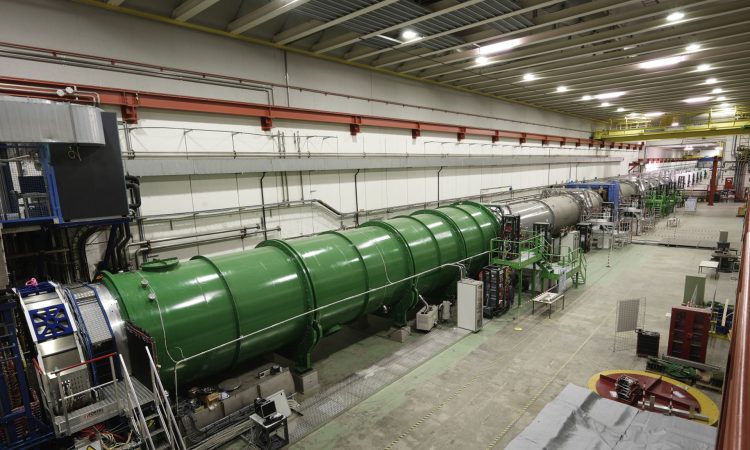
Scientists at CERN, home of the Large Hadron Collider, recently observed an extremely rare phenomenon at the subatomic level that could lead to a new understanding of the Standard Model of particle physics.
In an experiment called NA62, researchers observed a: they detected and measured an ultra-rare form of decay of a subatomic particle called a kaon. This is one of the rarest processes in particle physics: according to scientists, less than one in ten billion kaons decay in this way.
The standard model predicts this decay of the kaon, known as the “golden channel”, with great accuracy. Observing the phenomenon in action thus provides a unique opportunity to test our current understanding of the subatomic world.
An extremely rare phenomenon observed in a particle accelerator
“If we measure a deviation from , it is a clear sign of new physics,” explained Cristina Lazzeroni, a physicist at the University of Birmingham (England), who worked on the experiment. Kaons, also known as K mesons, are composed of two quarks. The electrically charged kaons, the subject of the experiment, contain an up quark and a strange antiquark.
Briefly, in this ultra-rare decay, charged kaons decay and produce three other particles: a charged particle called a pion, a neutrino, and an antineutrino (antimatter).
To observe this scenario, the researchers used a particle accelerator, the Super Proton Synchrotron at CERN, to launch a beam of high-intensity protons at a stationary target. This process released secondary particles, including kaons, which were precisely measured by a detector, .
With a stroke of luck, the researchers caught kaons in this elusive act: in numbers, charged kaons underwent this ultra-rare decay about 13 times in 100 billion. It is an extraordinarily rare phenomenon. But according to the researchers, it occurs about 50 percent more often than the standard model predicted, a discrepancy that will have to be reconciled one way or another.
Is the standard model of physics wrong?
However, this does not necessarily mean that the standard model is wrong. Because of the uncertainties involved, it is quite possible that with what has been discovered.
Even so, this is the most accurate detection of its type yet. Researchers have observed the ultra-rare decay of kaons before, but this is the first time it has been measured with a significance of five standard deviations, or five sigma, which is the standard for breakthroughs in particle physics; depending on the phenomenon involved, this means that there is only a 0.00003% or 0.00006% chance that what was observed is a statistical error.
“Looking for hints of new physics in this decay requires more data, but this result is a step forward and reinforces the strong interest in this line of research,” said Karim Massri, NA62’s physics coordinator, in a .

